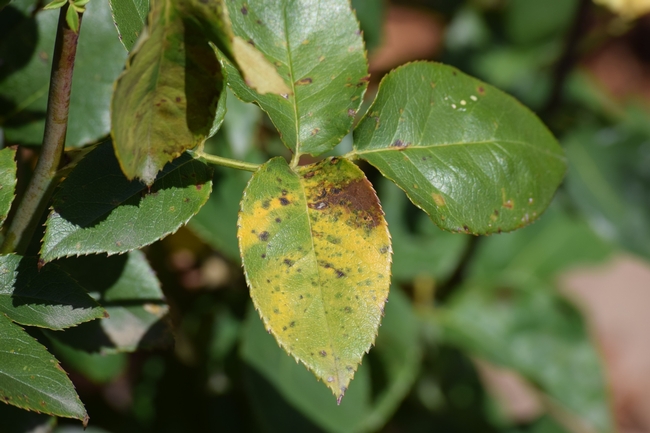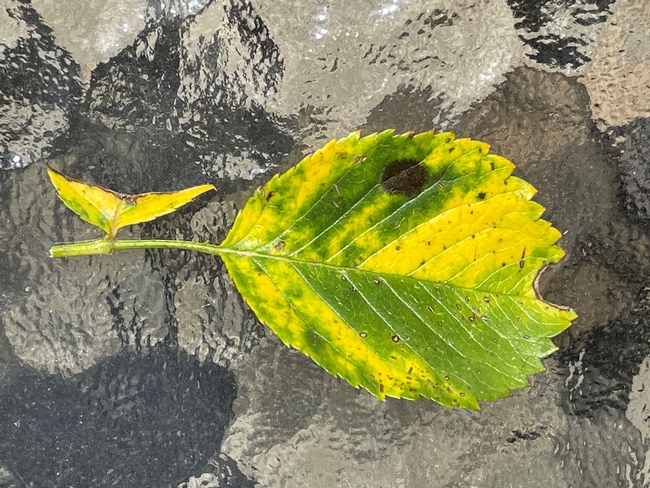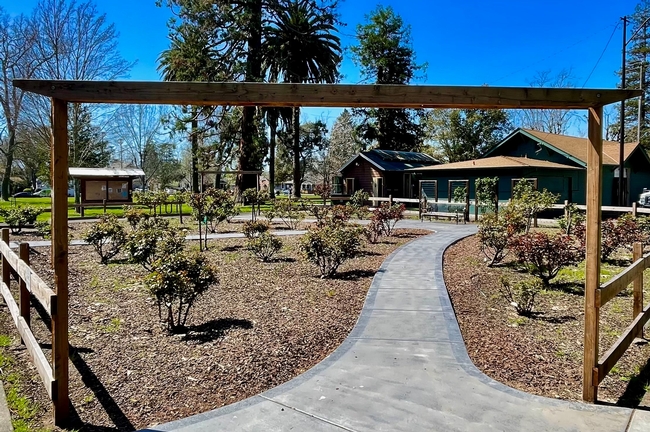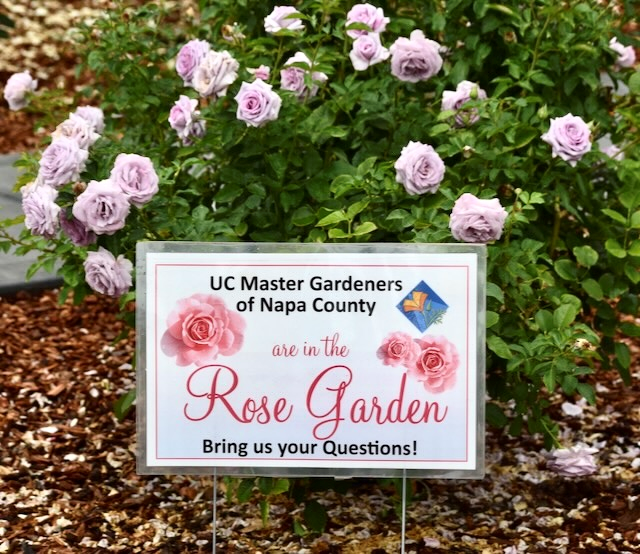BOOM!! We have flowers! There is an old saying, “April showers bring May flowers.” If you heard that as a kid you would finish that ditty with, “What do May flowers bring?” – you know the rest. While that is generally true in many areas of North America, here in the Napa area we get rain earlier and we see roses as early as March. If you are further north it may not be until June or July to get blooms. Most of Napa is in the USDA Plant Hardiness Zone 9b, which means we do not get as cold as much of the United States this time of year. Therefore, we get flowers sooner. In the last couple of years, we've also received more moisture from increased winter rain and coastal fog.
According to Master Gardener's Rose Cycle, April is when we watch for pests and diseases. We do that by opening up areas of new growth by selective pruning, allowing better circulation of air to the new foliage.
With the relatively warmer weather and rain in our area, roses do well. However, so does fungus. Fungi are the most common cause of plant disease and black spot is a very common occurrence in our coastal areas. See Photos 1 & 2 below.


Although black spot is caused by a fungus that requires moisture from rain or fog, it is especially prevalent when moisture stays in place for more than seven hours–much like our nice foggy coastal nights and mornings. This also holds true if you hose off aphids in the evening rather than in the morning. Doing the hosing in the evening will not allow the foliage to fully dry before the coolness of the evening sets in. The black spots occur on the upper surface of the leaves and stems, but not underneath the leaf. The spots are small to large with accompanying yellowing of the rest of the leaf.
Black spot can be minimized by pruning your bushes in such a way to allow ample circulation of air that can, in turn, reduce the dampness in the center of the bush and around the congested stems and branches. That is also why we, at the Fuller Park Rose Garden do our winter pruning and early thumb pruning of the lower parts of the canes in February and March. By doing so we encourage openness of those congested areas that will allow air and faster drying times. That task reduces fungal growth later in the Rose Cycle year. There are varieties of roses that are more resistant to black spot than others. When deciding to buy a new rose bush, ask your local nursery which bushes will be best in our area to resist fungus.
If you do not catch the black spot infestation early enough, your action of choice is to pick off leaves and clear away the infested materials that have fallen to the ground around the bush. The ground will harbor spores that can get on your plant again. Spraying your pruning shears and gloved finger tips with a disinfectant between plants will also reduce the exposure to disease infested bushes and those that are not so. You may consider using oil sprays such as neem oil to reduce the occurrence of black spots.
Remember: Toss that plant debris into your city compost bin and NOT your own compost pile. The City of Napa Solid Waste and Recycling Center's equipment produces temperatures high enough to destroy the spores while your backyard pile will not do so.
If you have questions about the Fuller Park Rose Garden and the Master Gardeners (MGs) who maintain that Rose Garden, the MGs are usually in the garden mornings of the first Sunday and third Thursday of each month between 10:00 and noon, weather permitting.
Watch for information about a Summer Rose Pruning course coming May 4th at our MG Classroom and the hands-on portion on May 9th at the Fuller Park Rose Garden. You can also go to our Master Gardner website: napamg.ucanr.edu more details.
Next month we will start our Rose of the Month feature in this blog.
Napa Master Gardeners are available to answer garden questions by email: mastergardeners@countyofnapa.org. or phone at 707-253-4143. Volunteers will get back to you after they research answers to your questions.
Visit our website: napamg.ucanr.edu to find answers to all of your horticultural questions.
Photo credits: Bob Niklewicz

